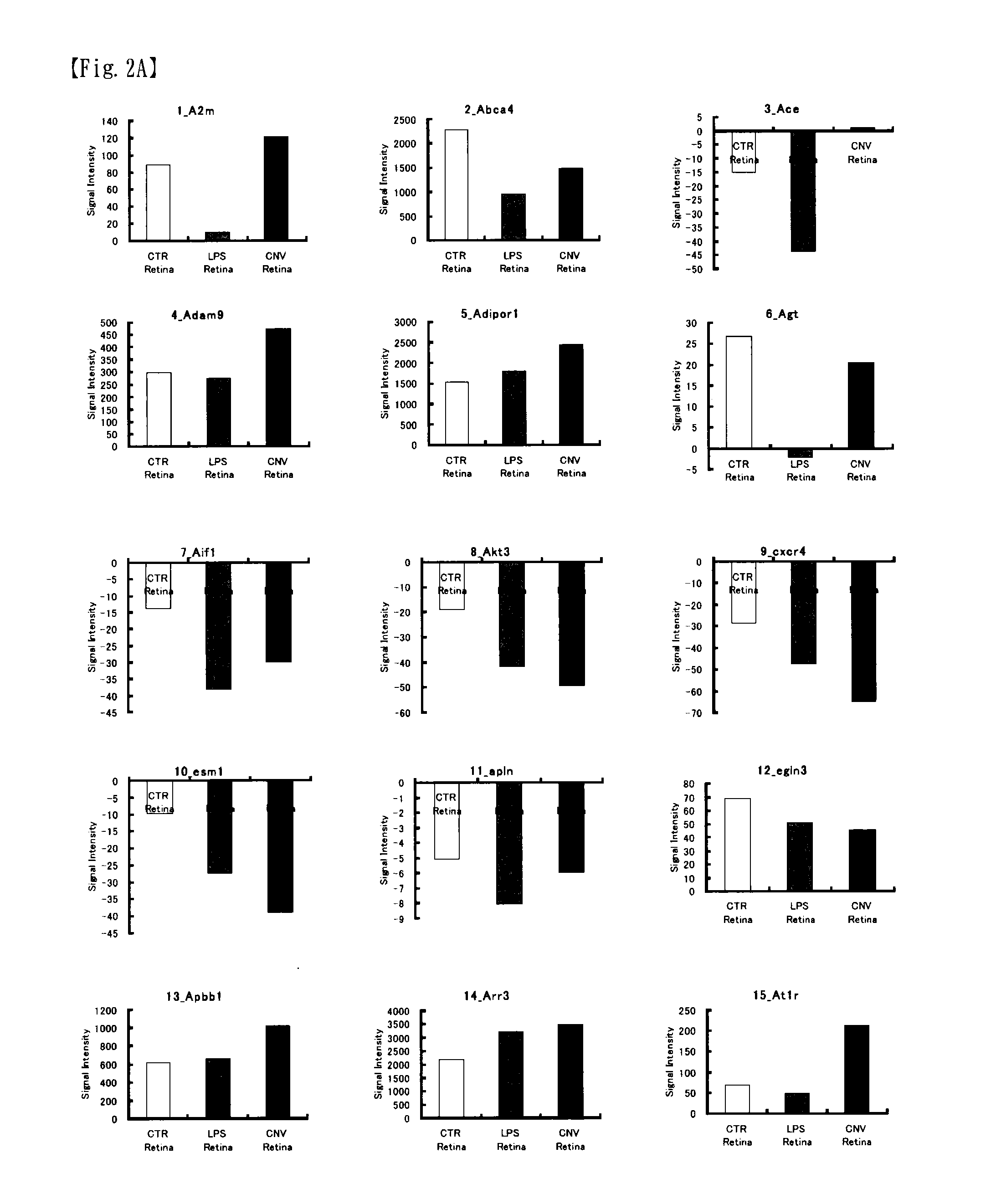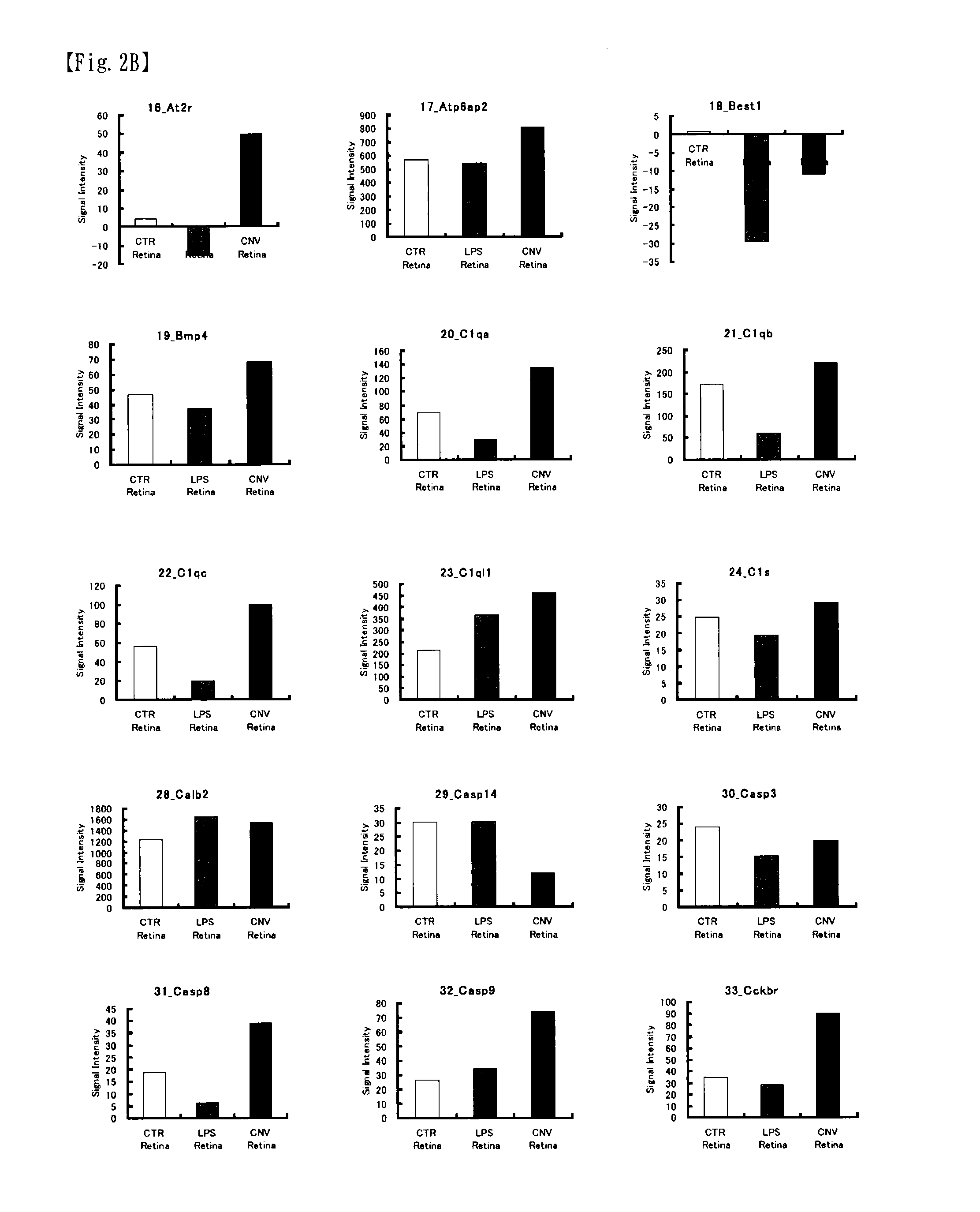Microarray for evaluating eye disease, and evaluation method of eye disease
a microarray and eye disease technology, applied in the field of eye disease evaluation methods, can solve the problems of inability to efficiently evaluate molecular markers, long methods to conduct, and insufficient detail in how an eye disease develops, and achieve the effect of evaluating the inhibitory or restorative function of foods
- Summary
- Abstract
- Description
- Claims
- Application Information
AI Technical Summary
Benefits of technology
Problems solved by technology
Method used
Image
Examples
example 1
1. Nucleic-Acid Microarray
[0174]Example 1 was conducted by using a nucleic-acid microarray (Genopal™, Mitsubishi Rayon Co., Ltd.) that mounts the probes described in Table 1 (SEQ ID Nos.: 1254).
2. Mouse Model with Eye Disease
[0175]As examples of a mouse model with an eye disease, the present example uses the following: a mouse with choroidal neovascularization caused by irradiating a laser to induce angiogenesis (CNV mouse); and a mouse with inflammation induced using lipopolysaccharide (LPS) as stimulus (LPS mouse). Information pertaining to each mouse is shown in Table 2 below. The “ID term” column of Table 2 shows the same as those in FIGS. 2 and 3 and Table 3.
TABLE 2animalIDtermanimalage in weeksconditionCTRC57BL / 6 mouse8-10 weeksnormalLPSC57BL / 6 mouse8-10 weeksLPS stimulus: 6 hrs afterintraperitonealadministration ofLPS 0.2 mg (PBS (—) solution)CNVC57BL / 6 mouse8-10 weeksCNV model: 1 week afterinducing angiogenesis by 10 μsirradiation of laser(wavelength 532 nm,output 100 mW)sit...
PUM
 Login to View More
Login to View More Abstract
Description
Claims
Application Information
 Login to View More
Login to View More - R&D
- Intellectual Property
- Life Sciences
- Materials
- Tech Scout
- Unparalleled Data Quality
- Higher Quality Content
- 60% Fewer Hallucinations
Browse by: Latest US Patents, China's latest patents, Technical Efficacy Thesaurus, Application Domain, Technology Topic, Popular Technical Reports.
© 2025 PatSnap. All rights reserved.Legal|Privacy policy|Modern Slavery Act Transparency Statement|Sitemap|About US| Contact US: help@patsnap.com



